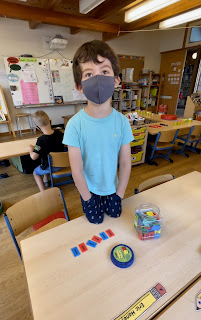The Preschoolers developed their understanding of the school community.
After asking people in the school, they understood the different roles and responsibilities of each one.
As a class, we synthesised and used the FORM of a person to understand that just like the body parts have FUNCTIONS, our school has members that have ROLES and RESPONSIBILITIES.
See the photo collage the preschoolers came up with to represent each members of the school community.
Mr. Inman (The Principal) - Head
He thinks and he plans for the teachers, parents and students.
He thinks of way to make the school a better place for everyone.
Support Staff (Yasuyo, Miyuki, Mizumi-san, Hanna, Bus Driver) - Hands
They help the students and the whole school.
They school will be messy and dirty without Mizumi san cleaning the school.
They help organise the school.
They call the parents when we are sick and we need something.
Teachers - The body
The teachers help the whole school function.
Helps the students, parents, Mr. Inman and everybody.
Parents - Feet
Without the parents, we will not be in the school studying. They walk to get us to school.
They help the school stand.
Students - Heart
Without students, the school will die.
Isn't it amazing for the Preschoolers to come up with a generalisation like that?!
Now, they were given a task to think and imagine what will happen if one of the members fail to do their roles or responsibilities? What could happen to the school?
"If Yasuyo san and Miyuki san do not do their work, Mr. Inman will be so tired in the office." - Alya
"If the students don't learn, parents will not be happy and complain to the teachers."
"If Mizumi san don't come and clean the school, there will be cockroaches and flies everywhere!" - Mia
NUMERACY
This week, the preschoolers looked into PATTERNS.
They defined patterns as: repeating, follows rules, again and again, alternating.
Look at some patterns they have created using found objects in the classroom.










Comments
Post a Comment